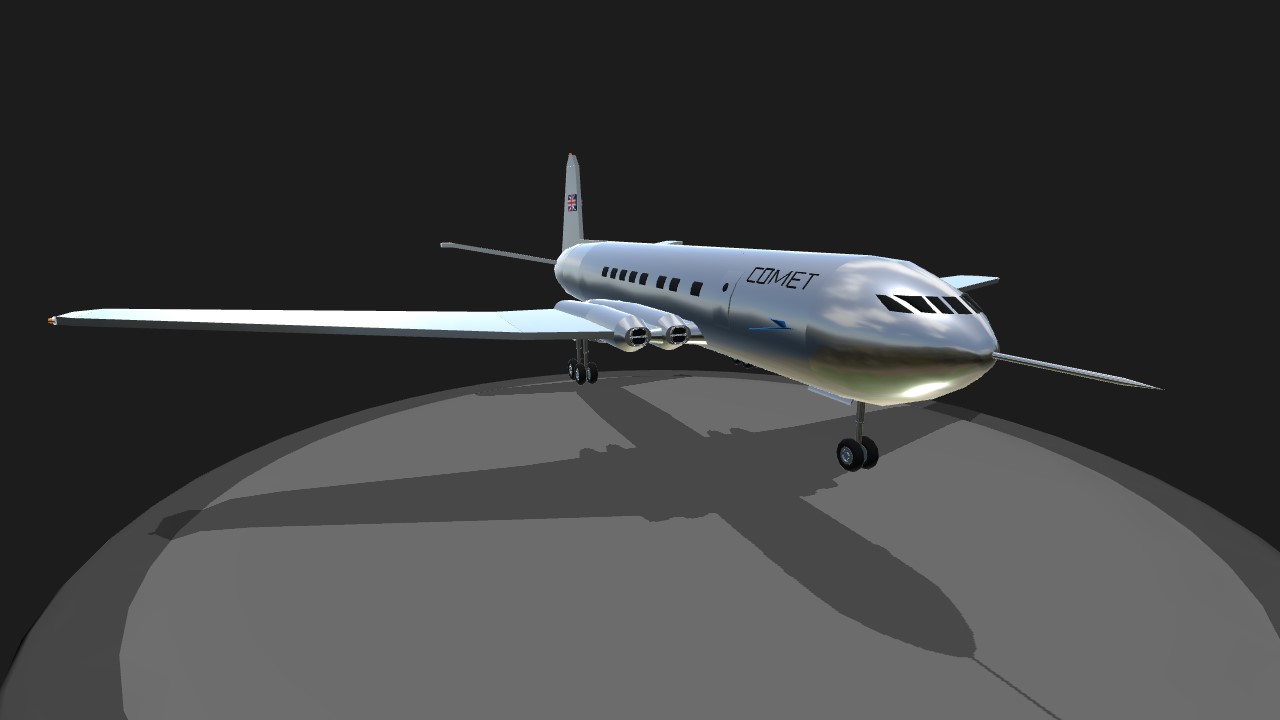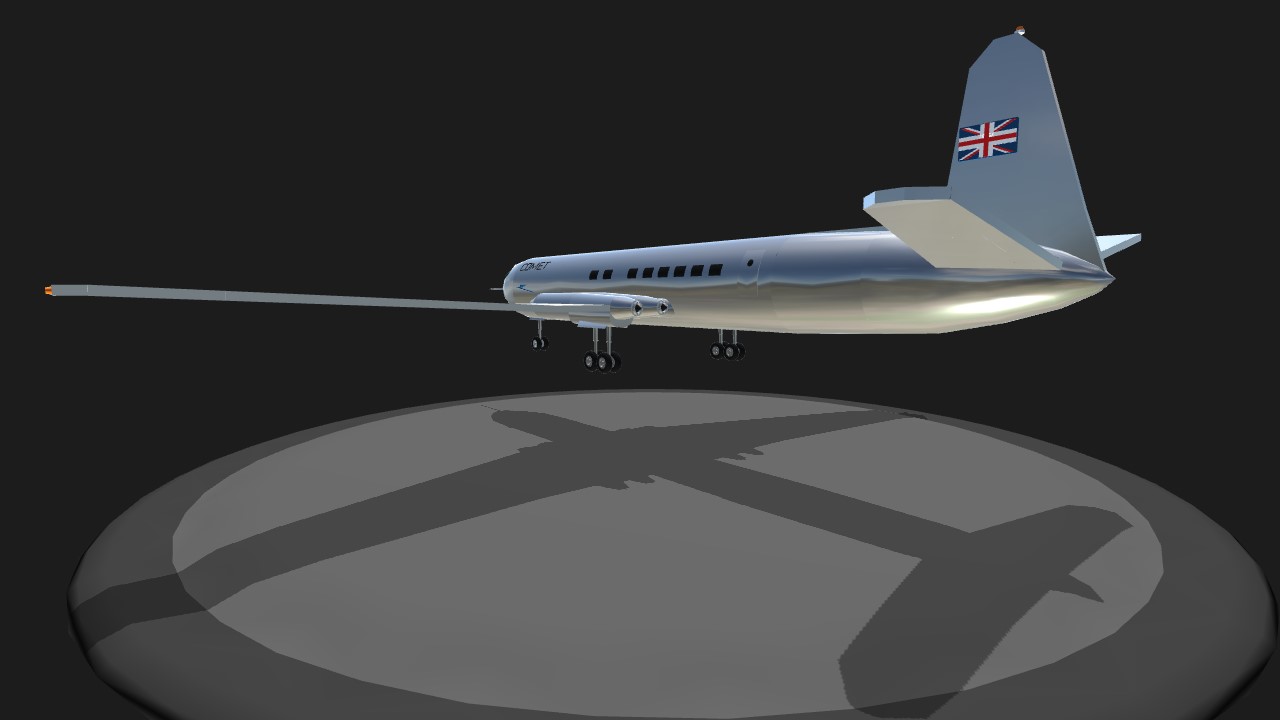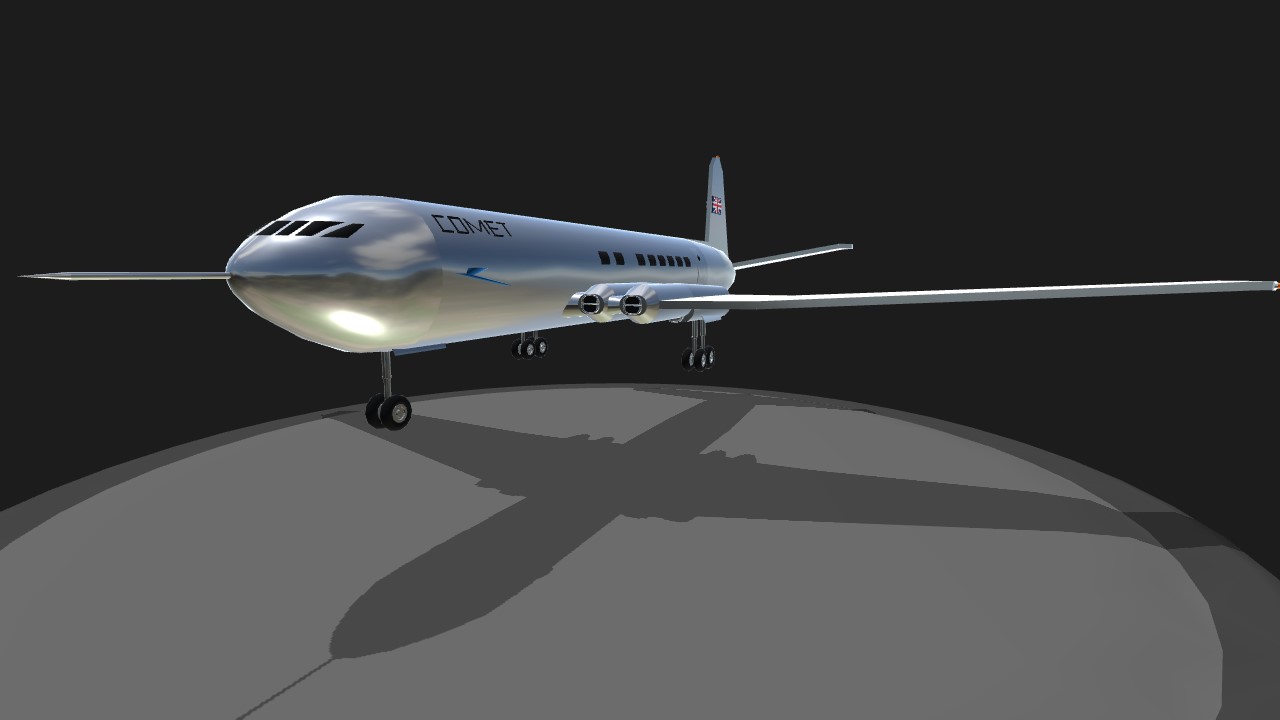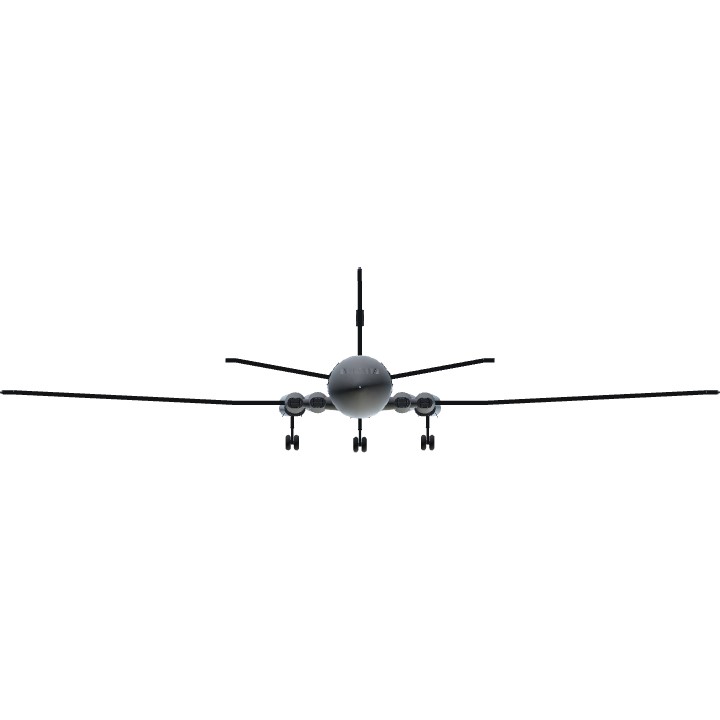Troisième version avec rééquilibrage des conditions de vol , feux de signalisations touche 4 .
Deuxiéme version avec nez refait , décoration et réglage du pilotage .
Première version du DH106 Comet , le prototype original avec la perche
sur le nez et les hublots carrés . Le de Havilland DH 106 Comet est le premier avion de ligne à réaction à entrer en production . Développé et construit par de Havilland dans son quartier général à Hatfield, dans le Hertfordshire au Royaume-Uni, le prototype Comet 1 vole pour la première fois le 27 juillet 1949. Il a une apparence aérodynamiquement épurée avec quatre turboréacteurs de Havilland Ghost situés dans les ailes, un fuselage pressurisé et de grandes vitres carrées. À cette époque, il offre une cabine passager relativement silencieuse et confortable et montre des signes de succès commercial à son entrée en service en 1952.Un an après sa mise en service commercial les Comet commencent à connaître des problèmes ; trois d'entre eux sont détruits en plein vol au cours d'accidents assez médiatisés. Il est établi par la suite que ces accidents sont dus à la fatigue du métal sur les cellules, phénomène peu connu à l'époque. Le Comet est retiré du service et intensivement testé afin d'en découvrir la cause ; le premier incident a été attribué par erreur au mauvais temps. Les défauts de conception, dont les tensions dangereuses aux coins des hublots carrés et la méthode d'installation, sont immédiatement identifiés. En conséquence, le Comet est entièrement redessiné avec des hublots ovales, une structure renforcée et d'autres modifications . Vitesse de croisière conforme a
l'original . Trim avec touche " VTOL" .
English version :
Third version rebalancing flight conditions, traffic lights button 4.
Second version with nose redone, decoration and steering adjustment.
First version of the DH106 Comet, the original prototype with the boom on the nose and square portholes. The de Havilland DH 106 Comet is the first jet airliner to go into production. Developed and built by de Havilland in his headquarters in Hatfield, Hertfordshire in the UK, Comet 1 prototype flew for the first time on 27 July 1949. It has a sleek appearance with four aerodynamically Havilland Ghost turbojet located in wings, a pressurized fuselage and large square windows. At that time, it offers a relatively quiet passenger cabin and comfortable and shows signs of commercial success to its entry into service in 1952.Un year after its implementation the Comet commercial service begin to experience problems; three of them were destroyed in flight over pretty profile accidents. It is later determined that these accidents are due to metal fatigue on cells, a phenomenon little known at the time. The Comet was withdrawn from service and tested extensively to discover the cause; The first incident was mistakenly attributed to bad weather. Defects in design, the dangerous tensions in the corners of square windows and the installation method, are immediately identified. Consequently, the Comet was redesigned with oval windows, reinforced structure and other changes. Cruising speed conforms to the original. Trim with key "VTOL".oisième version avec rééquilibrage des conditions de vol .
Specifications
General Characteristics
- Created On Windows
- Wingspan 55.6ft (16.9m)
- Length 46.6ft (14.2m)
- Height 14.3ft (4.4m)
- Empty Weight 31,339lbs (14,215kg)
- Loaded Weight 43,803lbs (19,868kg)
Performance
- Power/Weight Ratio 3.386
- Wing Loading 114.0lbs/ft2 (556.5kg/m2)
- Wing Area 384.3ft2 (35.7m2)
- Drag Points 5025
Parts
- Number of Parts 190
- Control Surfaces 7
- Performance Cost 722







@XEPOH , Thanks for your upvote .